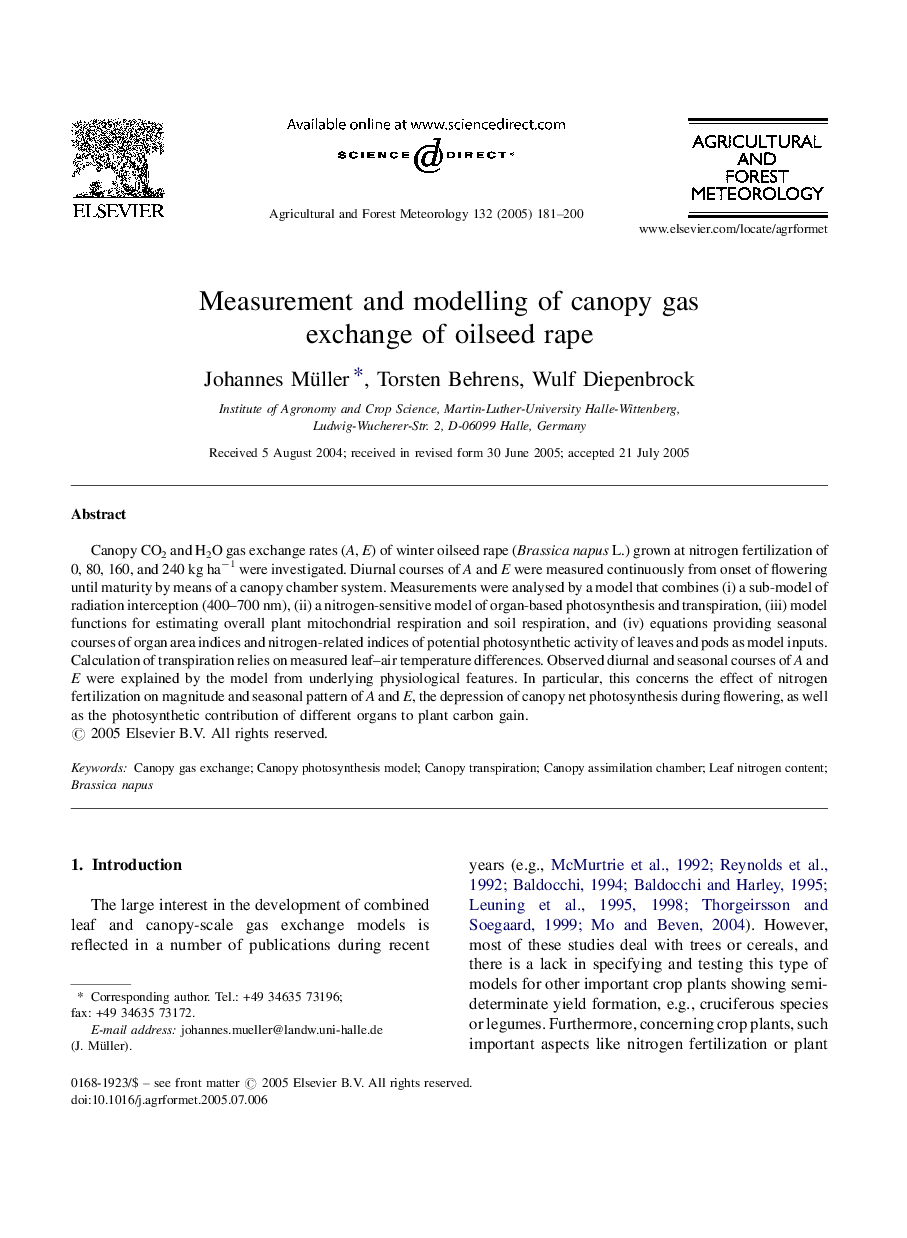| Article ID | Journal | Published Year | Pages | File Type |
|---|---|---|---|---|
| 9619442 | Agricultural and Forest Meteorology | 2005 | 20 Pages |
Abstract
Canopy CO2 and H2O gas exchange rates (A, E) of winter oilseed rape (Brassica napus L.) grown at nitrogen fertilization of 0, 80, 160, and 240 kg haâ1 were investigated. Diurnal courses of A and E were measured continuously from onset of flowering until maturity by means of a canopy chamber system. Measurements were analysed by a model that combines (i) a sub-model of radiation interception (400-700 nm), (ii) a nitrogen-sensitive model of organ-based photosynthesis and transpiration, (iii) model functions for estimating overall plant mitochondrial respiration and soil respiration, and (iv) equations providing seasonal courses of organ area indices and nitrogen-related indices of potential photosynthetic activity of leaves and pods as model inputs. Calculation of transpiration relies on measured leaf-air temperature differences. Observed diurnal and seasonal courses of A and E were explained by the model from underlying physiological features. In particular, this concerns the effect of nitrogen fertilization on magnitude and seasonal pattern of A and E, the depression of canopy net photosynthesis during flowering, as well as the photosynthetic contribution of different organs to plant carbon gain.
Related Topics
Physical Sciences and Engineering
Earth and Planetary Sciences
Atmospheric Science
Authors
Johannes Müller, Torsten Behrens, Wulf Diepenbrock,
